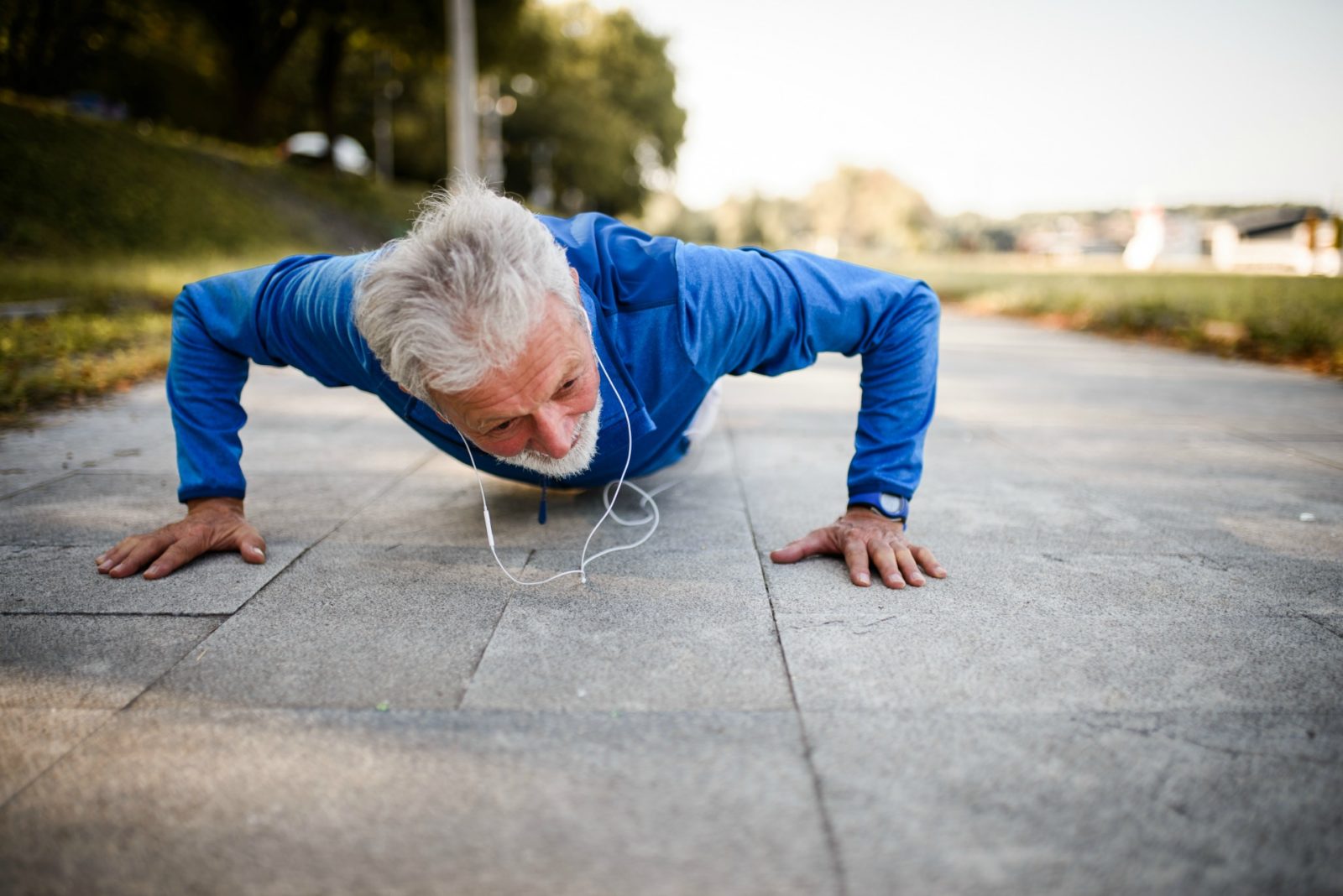
We all know that exercise is good for us, but it takes more than just light walking to reap all the benefits, Nick Rizzo, training director at RunRepeat, tells Starts at 60.
One type of exercise that is particularly important for over-60s is weight training. Yep, lifting weights isn’t just for athletes and 20-somethings; Rizzo says weight training is absolutely crucial for people as they age.
In simple terms, weight training is made up of strength-building moves that use some kind of weight to provide resistance. Resistance – the feeling that your muscles are pushing against something – can be provided by traditional weights such as dumbbells, your own body weight, bands or gravity. Some of the most common types of weight-training exercises are squats, lunges and push-ups.
You might be thinking that you’re too out of shape to start any kind of weight training, but that’s a big misconception, Rizzo says, adding that “this couldn’t be further from the truth”.
He’s on a mission to counter these misconceptions associated with weight training and is urging more over-60s to lift weights. To kick off the discussion about the benefits of weight training, Rizzo recently published an article, based on 126 peer-reviewed studies, outlining the 78 science-backed benefits of weightlifting for seniors.
You can read much more in detail at the link above but here’s his learnings in a nutshell.

Weight or strength training not only helps with weight control by burning calories, it can also help you maintain muscle mass and stronger bones as you age, making it more likely you’re able to live independently for longer. That’s because as people become less active in older age, their muscles become weaker and they lose flexibility – both issues that can be alleviated through weight-bearing exercises – increasing the probability of a life-changing fall.
Lifting weights may also help ease general aches and pain that come with getting older and reduce pain in osteoarthritis-affected joints, Rizzo adds. It can give you more energy and help to do simple things more easily, such as walking to the shops or getting ready in the morning.
“The most obvious one is that it can help you more physically capable to do whatever you need to do,” he says. “Whether it is carrying groceries, moving furniture, playing a sport and everything in-between.”
On top of being able to move around with greater agility and less pain, weight training also improves mental, emotional and cognitive health.
And it can help you live longer! According to the National Health Interview Survey (NHIS), adults 65 years and older who strength trained twice a week had a 46 per cent lower mortality rate.
“Putting all of those together, it becomes abundantly clear that if you want to live a long life being physically, cognitively, and mentally in control, weight training is a habit you [want to adopt],” Rizzo says.

You don’t need to go to the gym to get a great workout either. Exercises you can do at home with no equipment still ensure you reap the benefits of weight training – all you need is your bodyweight and a little bit of space.
For lower body, Rizzo recommends introducing squats, lunges, glute and calf raises and wall sits into your daily routine. Consider doing these exercises in each morning or right before bed, or while away the time by doing them between commercials while watching television.
You can also incorporate some weightlifting moves, such as kettle-bell swings. If you don’t have a kettle-bell, you can use a weighted water jug. For your upper body, focus on pushups, bodyweight dips and wall press exercises (also known as wall push-ups).
A quick search of the internet, particularly YouTube, will bring up plenty of demonstrations of how to do these exercises.
“Don’t be worried about using too much weight or anything like that,” Rizzo advises. “Focus on just being consistent and slowly progressing over the long term.”
Rizzo cautions that you should speak with your doctor before starting a new exercise program, especially if you have any sort of pre-existing injuries or health concerns that may impact your ability to train.
IMPORTANT LEGAL INFO This article is of a general nature and FYI only, because it doesn’t take into account your personal health requirements or existing medical conditions. That means it’s not personalised health advice and shouldn’t be relied upon as if it is. Before making a health-related decision, you should work out if the info is appropriate for your situation and get professional medical advice.